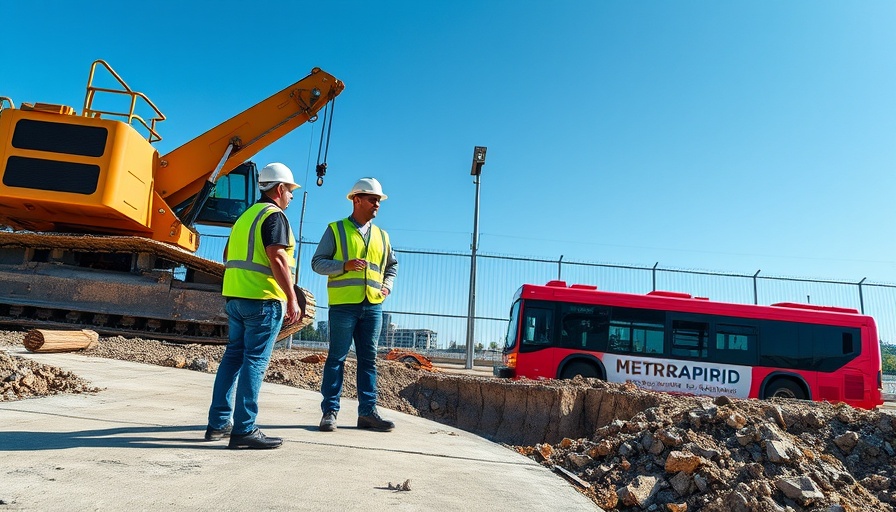
Transforming Public Transit: A $668 Million Commitment
On March 28, 2025, Los Angeles marked a significant milestone in public transportation by breaking ground on the $668 million G Line busway project. The initiative, backed by the Los Angeles County Metropolitan Transportation Authority, aims to expedite trip times on the bus rapid transit line by at least 12 minutes, equating to a 22% improvement across its dedicated corridor in the San Fernando Valley. This project is not just a construction overhaul; it’s a forward-thinking strategy aligned with Los Angeles' preparation for the 2028 Olympics.
Project Overview and Objectives
The G Line busway overhaul is spearheaded by Valley Transit Partners, a joint venture featuring notable construction firms like Stacy and Witbeck and Flatiron West. Utilizing a progressive design-build delivery model, this project is poised to enhance the frequency of bus service, ensuring five-minute headways. By reducing the possibility of motorist intrusions onto the busway, the upgrades promise improved safety for all road users—a compelling benefit as urban transit systems face growing pressure to meet the demands of expanding populations.
Financial Insights: Funding and Economic Impact
This endeavor is funded through a combination of voter-approved sales taxes such as Measure M and Prop C, alongside state-sanctioned infrastructure funding from SB-1. For business owners and property developers, understanding the financial models behind such significant projects is crucial. These funding sources not only reflect public commitment to infrastructure development but also signal potential economic uplift in surrounding areas, making them vital for future commercial investments.
Competitive Benchmarking: Learning from Other Cities
As cities across the nation grapple with aging infrastructure and the need for sustainable transit solutions, Los Angeles' proactive approach serves as a case study. Initiatives similar to the G Line busway have been seen in cities like Seattle and New York, where public transit upgrades have yielded economic revitalization. Property developers and investors can observe how strategic transit improvements enhance property values and community engagement.
The Broader Implications of Transit Overhaul
Beyond immediate traffic improvements, the G Line project represents a critical leap towards the ultimate goal of converting the line to light rail. As Janice Hahn, L.A. County Supervisor and Metro Board Chair, noted, these upgrades not merely boost transit efficiency; they also contribute to long-term urban planning strategies aimed at sustainability and livability in Los Angeles. For socially conscious businesses, this movement signals a growing trend focusing on eco-friendly developments that prioritize community health and wellness.
Conclusion: Readiness for Future Developments
In conclusion, the G Line busway project stands as a testament to Los Angeles’ commitment to enhancing its urban infrastructure significantly. Business owners, property developers, and community stakeholders are encouraged to engage with these developments, leveraging the insights gained from this ambitious overhaul. Understanding the intersection of construction management and urban transit can inform strategic investment decisions in a competitive climate. As the project progresses, staying informed and involved could yield unique opportunities for collaboration and growth.
 Add Row
Add Row  Add
Add 




 Add Row
Add Row  Add
Add 

Write A Comment